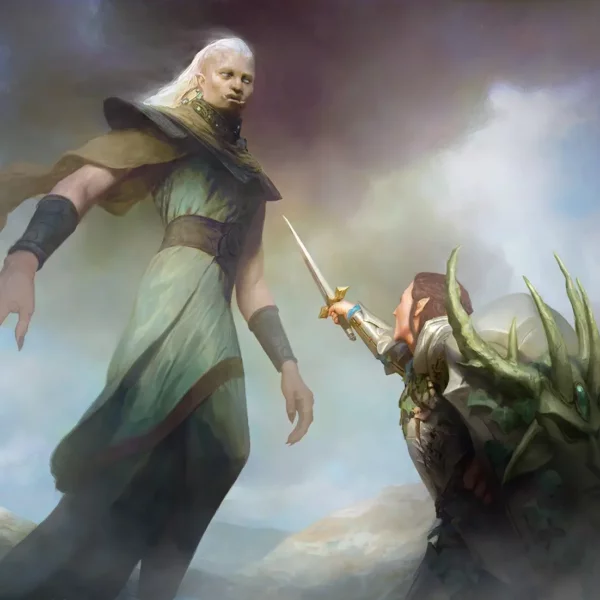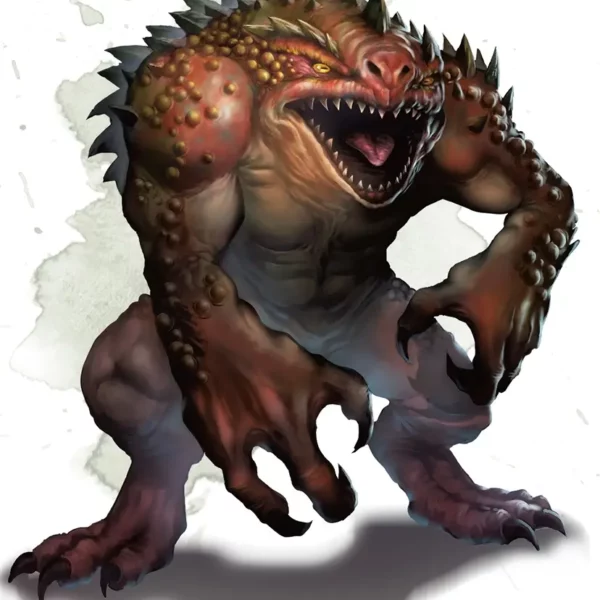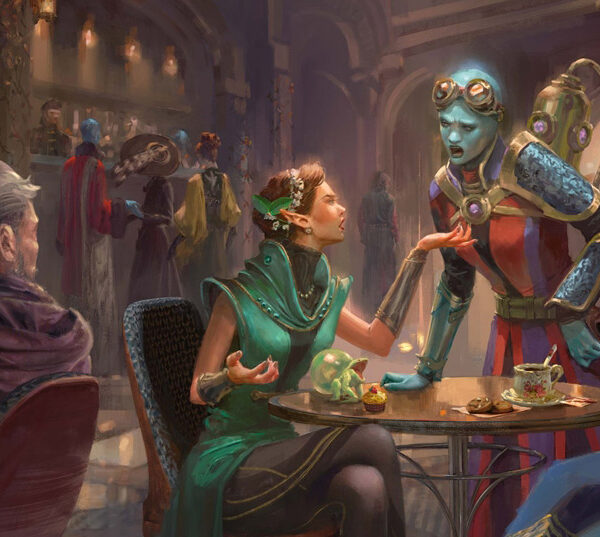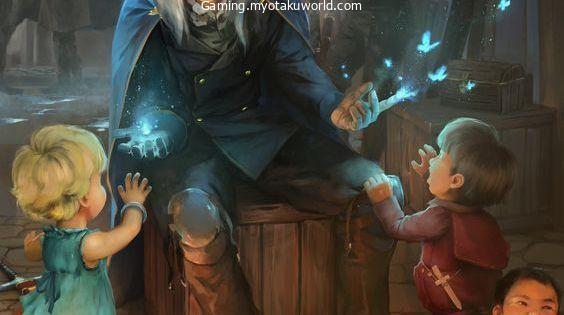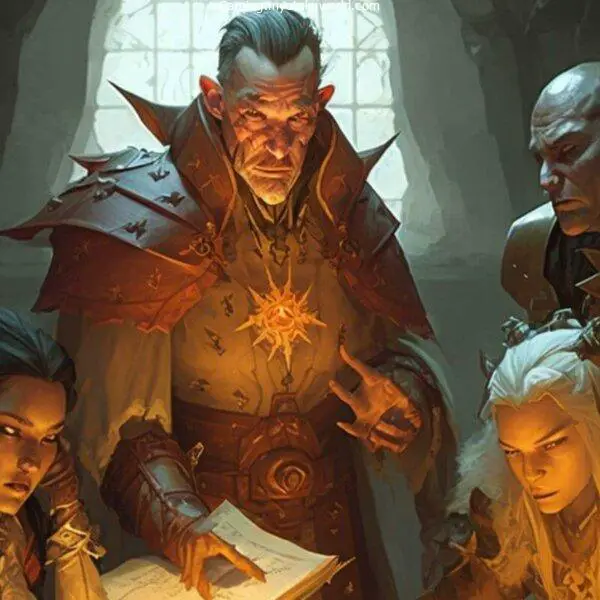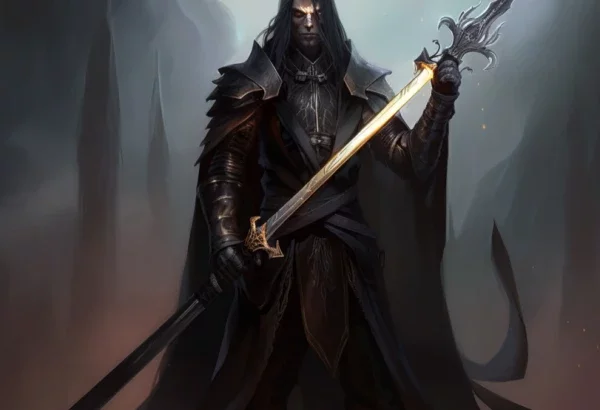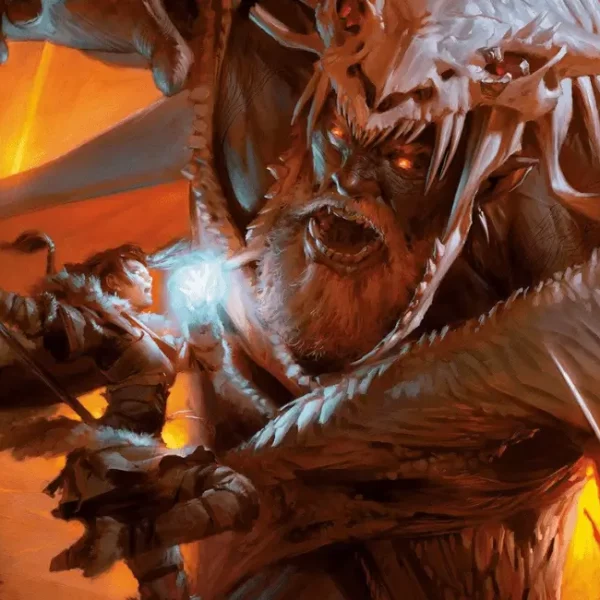Only one monster remains on the battlefield. The ogre turns around and begins to run, not wanting to suffer the same fate. The fighter facing the ogre won’t allow that to happen.
As the ogre flees, she raises her maul high above her head. This opportunity attack isn’t a regular one. Her maul glowing, she casts an energy spell that destroys the ogre with thunderous energy.
What ability enabled the fighter to attain such power?
How did she cast the spell to attack an opportunity?
How is it possible to be as cool and cool as her?
The War Caster feat has the answer.
What’s the War Caster Feat?
The War Caster feat can be found in the Player’s Handbook of D&D 5e. Feats can be used to unlock optional abilities that character characters have access to when they reach certain levels.
You can choose to take a feat, instead of the ASI, when you reach a level that allows you to improve your ability score.
Although feats are technically an exception rule, they are accepted widely at D&D tables. You should still check with your DM if feats are allowed in their game.
You get the following benefits if you take the War Caster feat:
- Constitution saving throws give you the advantage to keep your concentration on a spell even if you take damage.
- Even if you are busy, you can still perform the somatic parts of spells.
- Instead of making a melee attack, you can cast a cantrip to make an opportunity attack.
You must also be able to cast at least one spell to perform this feat.
Let’s continue the war caster 5e guide by explaining what each feature means.
Constitution Saving Throws to Keep Concentration
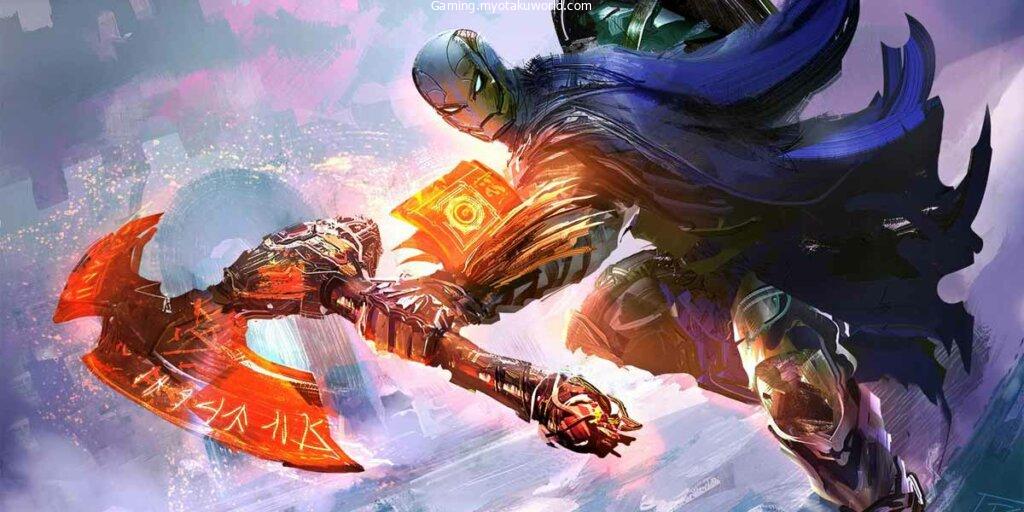
Concentration is essential for many powerful spells that last more than one turn. You must be focused on the spell’s effects. The spell may end prematurely if you lose your concentration.
Taking damage to your spells is the most common way to lose focus. You must make a Constitution saving throw if you take damage.
The DC must be equal to 10 or half of the damage that you took, whichever is greater. The spell ends if you fail.
This feat increases your chance of concentrating on a spell and gives you an advantage on saving throws.
Hands-On Components
You must be able to fulfill all requirements to cast spells in D&D. You must be able to speak. If you have a somatic component, it means that your hand must be free from any kind of movement. Material components are items you need on your body to cast the spell.
You can perform the somatic parts of the spell with one hand. This feat has no direct effect on the spell’s material components, but there are indirect effects.
This is because the PHB says that “a spellcaster should have a free hand to access a spell’s material components or to hold a focus on spellcasting. But it doesn’t have to be the same hand he or she uses for somatic components.”
Component Pouch
You will still need to have your hand free to reach the pouch for spells that contain material components, even if you are using a component pouch.
Musical Instrument, Arcane/Druidic Focus
To cast spells using material components, you must focus on the object.
Holy Symbol
When you use a holy symbol to focus your spellcasting efforts, it can make things more difficult when spells require material or somatic components.
We will assume that any verbal component is possible for our purposes. Casting a spell requires three requirements.
Without the War Caster feat
- Only for somatic purposes. No need to use a hand to do the somatic parts.
- Only. The hand holding your shield with your holy symbol on it fulfills this requirement.
- Material and Somatic. Material is fulfilled by the hand holding your shield. This spell can be cast using the same hand that holds the spellcasting focus.
With the War Caster feat.
- Only somatic. This feat allows you to perform somatic components with no hand.
- Material only. Similar to above.
- Somatic, Material. Similar to above.
Materials Components with a Gold Cost
No matter what focus you choose for spellcasting, if your spell requires a specific material component with a specified gold cost, you must be able to reach the components.
This applies regardless of whether the material components have been consumed.
Opportunity Attacks
You can use your reaction to attack against a creature that leaves your reach in D&D. This attack is normally a melee attack that uses whatever you have in hand.
You won’t be allowed to use your opportunity attack if the weapon you hold is simple or if you don’t have any in your hand.
This feat allows you to cast cantrips instead of running away from someone. This is because cantrips increase in damage as you gain experience.
For many classes, it can make a significant difference. An opportunity attack can also be useful for generating damage.
War Caster vs Resilient Constitution
Most players only care about one or two abilities when they read this feat. You don’t have to take this feat if you want the advantage on Constitution saving throws. Instead, you can choose the Resilient feat.
You can increase your ability score by 1 and gain proficiency with saving throws using the Resilient feat. You will be proficient with all Constitution saving throws if you choose Constitution.
Which is better? Resilient Constitution will give you a bonus of +2. If your Constitution modifier has been boosted, this bonus will be +3.
War Caster grants you an advantage on Constitution saving throws. Advantage does not provide a static bonus but increases the chance of rolling a higher number.
Rolling with an advantage will give you an average +3 boost to the roll. This can change as the DC of the check increases. Rolling an 8 or higher to maintain concentration checks is often enough (assuming a Constitution modifier greater than +2). This increases your chances of meeting it by nearly 25% or more if you roll with an advantage.
Your proficiency bonus will increase as you gain experience, up to a maximum of +6. Your bonus to Constitution saving throws increases with higher levels. This assumes a Constitution modifier greater than +2.
Lower levels have a greater advantage in Constitution saving throws, but proficiency will soon surpass it. You may choose to take the War Caster feat if you don’t plan to play this character at a higher level. You don’t need to choose if you are an Eldritch Knight or an artificer.
Which Classes Should Be War Casters?
What classes or sub-classes will be most benefited from the feat? Let’s take another look.
Artificers
Artificers already possess proficiency in Constitution saving throws so you don’t need to decide whether to take Resilient for the concentration bonus or War Caster.
Artificers who spend time in melee, such as the Battle Smith, won’t have to worry about how to stow and draw their weapons to cast spells.
Bards
Bard spells s that require concentration are difficult to master, so martial bards like the College of Swords or the College of Valor can utilize the other abilities.
College of Swords bards use the blade to focus their spellcasting, resolving the problem of material and somatic elements.
Bards have Vicious Mockery only as a cantrip that deals harm, but it can still be an acceptable option to attack someone as you throw an insult at them.
Clerics
Clerics have already circumvented the usual problems with somatic elements by signing their holy symbol onto their shields. This feat allows you to cast spells using somatic components, but not material components.
Potent Spellcasting is also available to some clerics, making their cantrips much more powerful than attacks with a mace. This feat makes it a great choice.
Druids
The concentration boost is for all druids. However, you won’t be unable to perform somatic components of spells very often. The subclasses have different opportunities to attack.
The Circle of the Moon druids won’t be casting cantrips to create opportunity checks. They will instead spend most encounters with their Wild Shape form. Other druid circles tend not to stay in the frontline of combat.
You should avoid making too many opportunities for attacks. Concentrating on spells can prove extremely useful for many druids, particularly Circle of the Shepherd Druids, who rely heavily on their summoning spells.
Eldritch Knights
This feat is ideal for Eldritch Knights. Fighting fighters are already proficient in Constitution saving throws. Concentration checks are very strong when you have an advantage.
Some of your most powerful spells are based on somatic components, but not material.
This feat allows you to carry a sword, shield, or heavy, two-handed weapon while still being able to cast spells.
The majority of Eldritch Knights can cast Booming Blade rather than taking the attack action. If they run away, being able to cast this Cantrip as an Opportunity Attack will cause additional damage.
This feat requires you to be able to cast one spell to gain it. Unfortunately, this is not possible at level 1.
This feat is not available to you with the Variant Human or Custom Lineage, so you’ll have to wait until the fourth level.
Paladins
Paladins act much like martially-focused clerics. They can wade into battle wearing your holy symbol on their shield. Concentration is helpful if you wish to cast Heroism, Shield Of Faith, but not essential.
As a Paladin, your opportunity attacks will be with your weapon. Most paladins do not learn cantrips so that feature of War Caster is useless. You will not be able to pick up this feat at 1st level, as you can only gain spellcasting at 2nd.
Rangers
As a ranger, it can be extremely helpful to keep your focus on the few spells you are using. You won’t be unable to do the somatic parts of spells very often, and you will not learn cantrips unless Druidic Warrior is taken.
This feat cannot be taken at 1st Level through Variant Human, Custom Lineage, or Custom Lineage. Spellcasting can only be done at the 2nd Level.
Arcane Tricksters
Arcane Trickers can be compared to Eldritch Knights as they are a subclass of a martial class that spell casts.
This subclass focuses on magic enchanting and illusion, rather than the evocation of an Eldritch Knight.
However, War Caster to an Arcane Trickster is a powerful combination. Booming Blade can be cast as a response to any attack and will trigger your sneak attack damage.
You can do an incredible amount of damage with your sneak attack, even though it only works once per turn.
Sorcerers
Sorcerers are the only arcane class that has proficiency in Constitution saving throws.
Concentration checks at all levels are reliable when you have an advantage. It’s not necessary to worry about somatic components.
It will be more powerful to cast a cantrip than make a melee attack. You do have a chance to hit a d6 target.
You don’t want to get so involved in combat that you are making opportunities for attacks against anyone. If someone is running from you, be grateful.
Warlocks
Concentration is especially boosted when you have so few spell slots. Hexblade warlocks and Pact of the Blade are the best beneficiaries of this feat.
Warlocks, an arcane class that can be converted to melee combatants with the Hexblade, are warlocks. The Hexblade will give you a boost in concentration and make it easier to cast spells.
If you intend to cast the eldritch blast to trigger the opportunity attack, you can fire the normal number of beams depending on your level.
As long as they all target a creature that provoked the attack, it will work as normal. These attacks will be disadvantageous because the eldritch blast is a ranged attack and the creature is within 5 yards when you make the opportunity attack.
Wizards
Concentrating on spells is an essential skill for spellcasters. This feat is for wizards. It won’t take you too long to master somatic components and you won’t need to juggle many weapons.
Bladesinger is an exception to this rule. Bladesinger in melee will need to keep their focus on their spells.
Most likely, you will have one hand free for your somatic components. The wizard can cast Booming Blade to attack as an opportunity attack.
Is War Caster Good?
In our 5e Feats Tier List, we gave War Caster a S Tier rating, which makes it one of the most powerful feats in D&D 5e.
War Caster is like Polearm Master in that it enables a certain build instead of giving raw power to a build that already has it.
A lot of characters like to use magic in battle, which can mean that they can take damage from more than one source each turn.
The last thing these spellcasters want to do is lose their focus and have to cast another spell, which would use up an action, a bonus action, or a spell slot. For these builds, getting advantage on concentration checks is a big deal.
War Caster also lets you use somatic components without needing a free hand, and it can let you cast a spell as an opportunity attack. If they don’t have this feat, melee spellcasters will be much less useful.
How does War Caster interact with spellcasting foci?
The answer is a little different depending on which class you chose. When you cast a spell, you can use the same hand as a “spellcasting focus” and move your body in other ways.
War Caster, on the other hand, doesn’t get rid of the need for material parts like a foci does. If your spell needs an item, you should take off your shield or weapon and pick up the item or your focus before casting it. The only people who are not affected by this are those who use holy symbols.
Since their foci for casting spells can be attached to their shield, they don’t have to use a free hand for either part. This is why Clerics and Paladins don’t get as much out of War Caster.
FAQs
How impressive is the feat of warcaster?
The war caster feat can be used to create powerful “gish” characters. It is good for both spellcasting and martial skills. These include Battle Smith, Eldritch knight, Arcane Trickster, and Hexblade Warlock.
Is War Caster more resilient than resilience?
Resilient constitution is technically better than War Caster when it comes to maintaining concentration. While War Caster performs better at lower levels, your proficiency bonus is less and is still effective at rolling at least 10 points.
Can you cast an arc with War Caster?
Yes. War Caster has three benefits.
Can you cast Magic Missiles with War Caster?
No. Magic Missile is a 1st-level spell. War Caster allows you to only cast a cantrip for your reaction.
Can you cast Eldritch Blast using War Caster?
Yes. But every beam must target that creature that provoked it. Each attack roll is disadvantageous because it’s a ranged attack and there are hostile creatures within 5 feet.
Which builds need War Caster?
War Caster is a great class for anyone who wants to be surrounded by bad guys while casting spells. So, any melee-focused spellcaster who isn’t a divine spellcaster (such as a Cleric or Paladin) should get this as soon as possible.
Final Words
Any character that can cast at least one spell is eligible to use War Caster. There are three main advantages to it:
- Concentration checks are easier for you.
- You don’t have to be a skilled spellcaster in order to perform the somatic parts of a spell.
- A cantrip can be used as an opportunity attack.
To get the best out of this feat, it is important to have access to all three features. This feat is strongest for the Eldritch Knight and Hexblade warlock.

